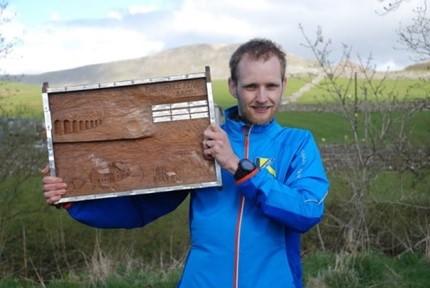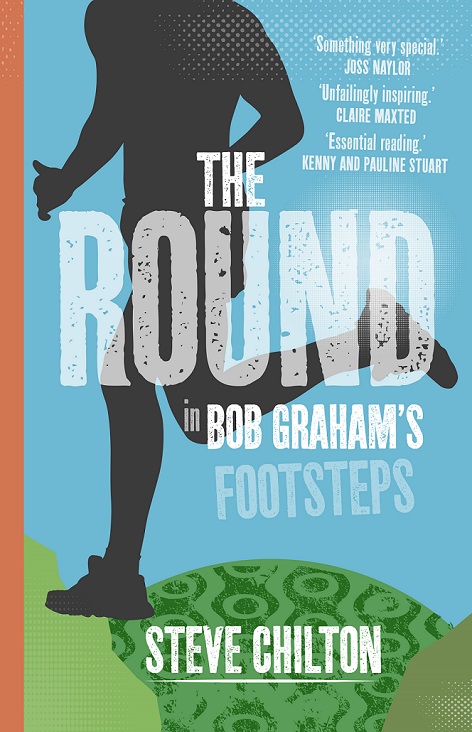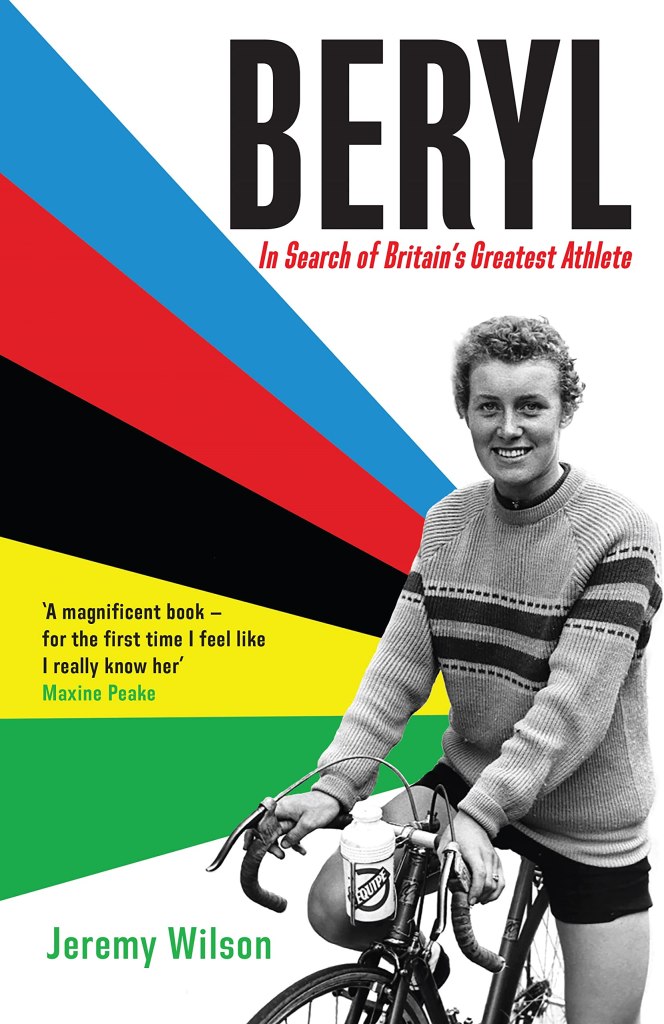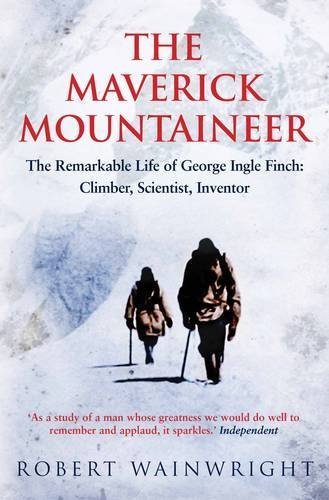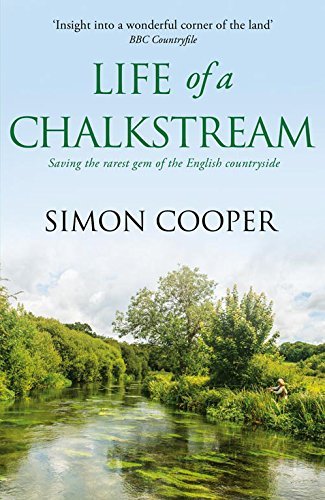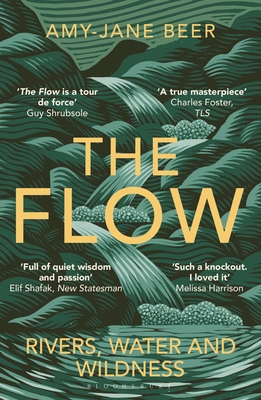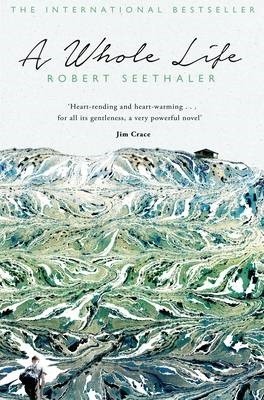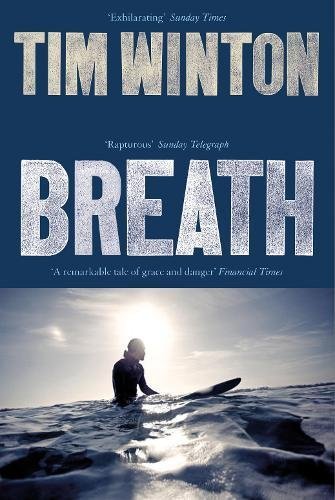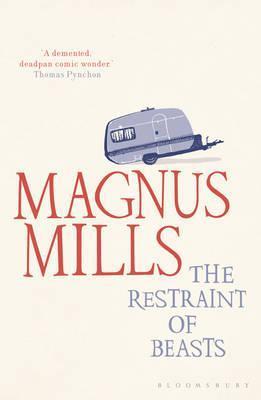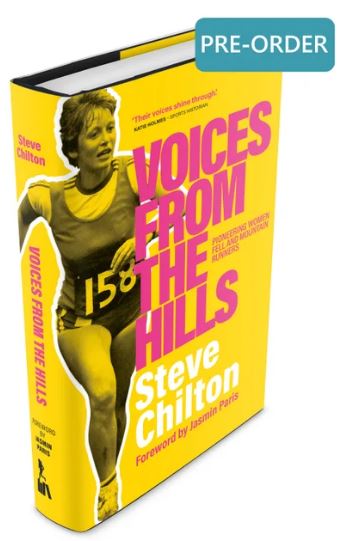The Three Peaks Race – some stories behind the stats #2
Story #1 was about the club with the most awards for finishing 21/15 times at the Three Peaks Race. This second ‘story behind the stats’ is about the household that can lay claim to the most number of wins at the race.
Whilst researching my book on the history of the Three Peaks Race I was invited to visit two elite athletes living in a quiet corner of Haworth to hear about their backgrounds, and their stories about competing in the iconic Yorkshire race. Pulling in to park, I was welcomed in by Sarah Rowell, with Andy Peace turning up a bit later. Sarah had arranged for partner Andy’s cousin Ian Ferguson, and Victoria Wilkinson (both multiple 3P winners), to be there to for a chat as well. The four of them have won the race a fabulous combined total of 16 times.

Story #2 is based on the fact that Sarah and Andy’s 8 wins gives them the (completely pointless) distinction of living in the house with the most Three Peaks Race wins. [A later story will highlight the two families that have race winners across two generations.]
I spoke first to Sarah, who ran through her 3P experiences, with her usual self-critical analysis being helped by referring to her training diaries.
Sarah had an emphatic win in 1991 in her first 3P race, taking an incredible sixteen minutes off the women’s record (with her 3-16-29). Sarah turns to an entry from her training/racing diary for that year and gives a fascinating reading from it from the entry for that race:
Conditions good. Nearly too good as it was hard underfoot. I wore a pair of unstudded Walsh PBs. Felt OK, but a bit heavy-legged the whole way round. Led the whole way. 2-mile road stretch was a bit unpleasant but survived. Ate Dextrosol on the run between Pen-y-Ghent and Whernside. Probably ate too much for the amount of fluid drunk. Felt out of it and dead-legged over last couple of miles. Not sure if bonk or dehydration. Ended up 22nd after being in the top 20. Feel there is more to come, especially as I had no zip at the end.
In 1992 there were gale force winds and heavy ground conditions for the race, although the summits were clear and there was no rain on the day. Interestingly, Sarah Rowell says that she feels that this Three Peaks Race win was her best performance at the race, despite it not being a course record. She explains.
I would always look at my time relative to the men’s winner, and ideally aim for between 108-112% of the winning men’s time. While I certainly did not achieve that all the time, the percentage gap I had that year behind Fergy [Ian Ferguson], a great athlete, was a really good one – plus I made the top 20 overall.
Sarah Rowell was back again in 1994, winning convincingly despite fading somewhat on the run-in. She finished in 34th place overall, in the slowest of her four wins – in 3-21-50. Sarah said at the time that she was running quite well that year, ‘but unfortunately, I had a cough earlier in the week. I knew going up Pen-y-Ghent that it wasn’t going to be my day. So, it became just a case of getting round.’ Sarah’s diary for the event read:
Weather good, but still wet and boggy underfoot. Quite a breeze. Felt OK warming up. Cough seems to have been tackled. OK early on sitting in main bunch. Once climbing Pen-y-Ghent it was a case of let’s get round. Mixed feelings. At least I ran. No high on finishing, but a feeling of ‘if only’, given the shape I was in a couple of weeks ago.
Sarah Rowell achieved her fourth win in six years in 1996, with a second course record. She thus matched Vanessa Brindle as a four-time winner, and it was Vanessa whom she beat into second place that day by a staggering 19 minutes, shaving 12 seconds off her own record from 1991. Sarah again finished high up the field, this time in 20th position.
Some athletes have prepared so well that they expect to win when they race. Fell icon Billy Bland had that in his armoury and rivals would be going to the start line thinking they were running for second place. Sarah Rowell says now that she had that expectation – to an extent. ‘A lot of my self-belief came from good training. Then what I wasn’t able to always do was take that self-belief and use it as well as I could have done.’
…………………
Andy Peace made us coffee as we exchanged backgrounds. He had no training diary to hand, but had an exceptional memory for in-race detail. He first explains that if you ran in Bingley [Harriers] everyone seemed to do Burnsall and Ben Nevis, and also run the Three Peaks. You felt like you had to run the Three Peaks. ‘I wasn’t really aware of the history of the race then. I was aware that Fergy had won it a few times as I had seen him do it.’
Andy Peace had a seemingly easy 3P win in 1994, by a margin of almost four minutes, from Mark Rigby. Andy’s win was his first crack at the Three Peaks Race. He says he had no idea how he would get on that day because he had never run that far before. He hadn’t been doing long training runs and doesn’t think he had recced the course by then. Tellingly, he did do some recceing after winning.
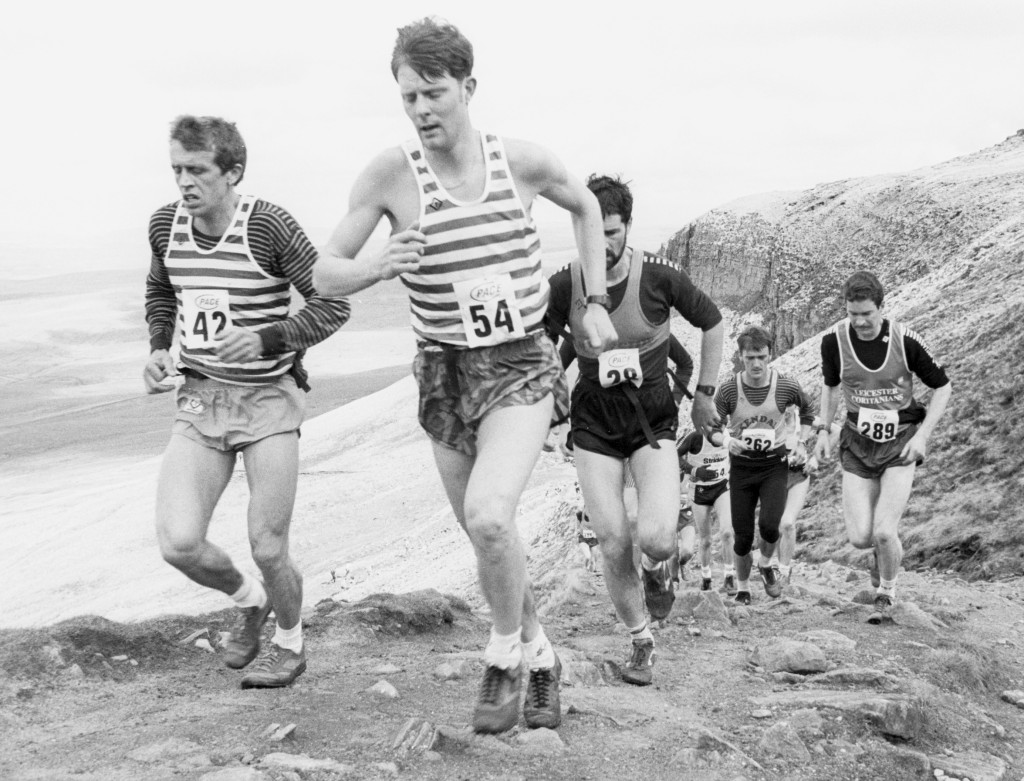
There was a clash with a British Champs race in 1995 which affected the overall quality of the men’s field, but the front of the race was still very strong. The Bingley athletes, Andy Peace and Ian Holmes, ran through Ribblehead together and appeared to be on for a new record. Still inseparable at Whernside summit, Peace opened up a gap on the Hill Inn approach which he increased to seven minutes on Ingleborough and over ten minutes by the finish. However, perhaps through the lack of a challenge in the latter part of the race, he missed the record by just over a minute. Holmes agrees now that they were chasing the record. Andy Peace animatedly says:
Holmsey was on fire, but I was not going to let him get away. I was thinking this is harsh. It was a lovely day. I expected to gap him on Whernside as I am a better climber than him and he is a better descender. The fact that I didn’t drop him on Whernside had me thinking this could be a bit close. Then he dropped his bumbag on the ridge of Whernside as he was fumbling about trying to get something out of it. No way I was going to wait for him! I never saw him again after that, which was bonus really. I think the fact that he set off so hard cost us the record on that day, because I was tying up and cramping by the end.
1996 saw a stunning men’s new course record, set by Andy Peace (alongside Sarah Rowell’s for the women). The fact that both these records were set when underfoot conditions were firm just emphasised what effect that, and the weather, can have. Andy Peace set off as though he was aiming to do some damage to his cousin Ian Ferguson’s course record from five years previously. Andy recalls that the year before Ian Ferguson had called out “You’ll never beat my record!”, which of course just added to his determination to do so this year. Andy Peace then quietly mentions that he can recall the splits from that record time from the top of his head: ‘28.5 on Pen-y-Ghent, 72 something to Ribblehead, 1-40 on Whernside, 1-55 at the Hill Inn, 2-20 at Ingleborough, and 2-46 at the finish’. He then gives a full resume of his approach and how it had gone.
I knew I was going well and was in good shape. I was in my late 20s and confident. I stood on the start line and Mark Roberts had the times on his wrist to run 2-52. I said to him, “well you are not going to win then are you” [laughs]. I had run in the National 12-stage the day before and we had won it. I had run a short leg and I was a bit disappointed in my time really. We had a massive lead and subconsciously I was probably taking it a bit easy and didn’t push like I could have done.
[Andy’s 3P record has never been beaten, and now never will be, as the course change in 223 and is now over 1km longer than it was in Andy’s era.]
Andy Peace came back again to win in 2004, eight years after his last win. Andy claims that Simon Booth had been favourite to win that year and get his treble. Simon responds to me: ‘It is a fair reflection to say I was favourite because that is what I thought. I heard some people saying that Andy was the favourite which kind of got me more motivated. I was thinking Andy was a has-been! [He laughs at this, as Andy is younger than him]. But he certainly reminded me of his class that day.’
When I later spoke to Ian Holmes he added his take on that race. ‘I think that year [2004] was Andy Peace’s best run there really. Nobody had him down to win that one. Simon Booth may have been the favourite to win having won in 2000 and 2002. But Andy knew how to run the Three Peaks by then.’
………
These stories are from my Three Peaks Race book, which is being published to tie-in with the 70th Anniversary of the race, which takes place this year on Sat 27 April. I will be there at the event to launch the book, and hopefully sell and sign some copies to participants and spectators (and have some of my other books at discount too).
The book is published on 16 April and is available to pre-order right now – direct from the publishers, at: https://www.gnbooks.co.uk/?s=Three+Peaks.
The Three Peaks Race – some stories behind the stats #1
Having done a couple of book talks that were essentially about publicising ‘Voices from the Hills: pioneer women fell and mountain runners’, at the Bowness Book Club and the Armitt Museum (https://itsahill.wordpress.com/2024/02/13/three-book-chats-events-coming-up-in-march-and-april/) I am moving on to publicise my book on the history of the Three Peaks Race, due out in mid-April. I will be posting a series of blogs that tell the stories behind some of the stats that I have unearthed in my research, about the fluctuating entry numbers, multiple race winners, and successful families of runners.


This first post is about the athletic club that has the most runners who have received the award for women who complete 15 races and men who complete 21 races. Over the 70 years of the race only 54 awards have been made, and an amazing 20 of these have gone to Clayton-le-Moors Harriers. Recently the group met up at Horton in Ribblesdale railway station, as Jon Sharples reported, ‘in some proper fell runner’s weather. Clayton member and race photographer Stephen Fish kindly took the photograph. A very enjoyable meal followed at the Knights Table restaurant, Little Stainforth, with lots of excellent conversation, reminiscing of previous times, races and club members past.’
In the photo are: Robert Hargreaves, Roger Dewhurst, Pete McWade, Katy Thompson, Jon Sharples, Dennis Beresford, David Scott, Martin Brady, Harry Walker, Kieran Carr, Andrew Orr, and Brian Horrocks. [The other Clayton award holders are Wendy Dodds, Richard Wilkinson and deceased members Stan Bradshaw, Alan Heaton, Alistair Patten, George Brass, Ed Hill and Don Talbot.]

Dave Scott is one of two runners* in that photo that I interviewed in depth for my upcoming book, ‘The Three Peaks Race: the history and characters of the marathon with mountains’. He has run the race more than any other runner, having completed it an awesome total of 48 times, after first competing in 1965. [* the other is Harry Walker, who will feature in a future blog post]
I had a long chat with race legend Dave Hodgson early in my research, and he explained how the 21 Three Peaks completions award came about. ‘I think I was Chairman at the time. George Brass was on the committee as well. George suggested that we should give a special trophy to anyone that had finished the race 21 times, because the Ben Nevis race did that.’ The first year they were presented was in 1988, and recipients that year were (with number of years in brackets): Alan Heaton (31), George Brass (25), Stan Bradshaw (23), Alistair Patten (22), Dave Scott (21) and Clifford Huck (21). Alan Heaton had only not run in four of the races between 1954 and 1988.
Dave Scott is rightly proud of the achievements of his Clayton clubmates. He reflected on changing times. ‘Because of the weather, the underfoot conditions, changes to the course, new paths, boards and paving stones, it is difficult to compare times. There have been at least seven course changes whilst I’ve been taking part. The route from Pen-y-Ghent to Ribblehead is now defined, but originally there were numerous options. Some were better than others, so going for a recce was key then.’ Looking back now on the range of weather conditions he has run the race in, Dave Scott notes: ‘I remember discovering that hailstones hurt at 2,000 feet when you have less hair.’

The Three Peaks Race book is being published to tie-in with the 70th Anniversary of the race, which takes place this year on Sat 27 April. I will be there at the event to launch the book, and hopefully sell and sign some copies to participants and spectators (and have some of my other books at discount too).
The book is published on 16 April and is available to pre-order right now – direct from the publishers, at: https://www.gnbooks.co.uk/?s=Three+Peaks.
Three book chats/events coming up in March and April
In March and April I have got three different events where I will be talking about my various books and/or where folk will be able to buy the latest one, and the earlier ones too.
Firstly, I will be the guest speaker at the Bowness Book Club on Thursday March 7, at 10.30 am at the Burn How Garden House Hotel. I will be talking about my life as a published author, with a few anecdotes about things that went well and that didn’t necessarily do so, and discuss some of the issues women runners faced that I write about in ‘Voices from the Hills’. I will be happy to answer any questions, and my books will be for sale, all at well below RRP. There’s no need to join, no fee, and no expectation to have read any of my books. If you like books, and would like to meet this Lakes-loving author, just come along.
FULL DETAILS: https://www.burnhow.co.uk/book-club-is-back/
………………………………………….

Two days later (Sat 9 March) I am talking at the Armitt Museum, Ambleside, as part of the Running Int’Fells exhibition. I will be talking about the barriers encountered by the first female fell runners who fought to participate in the early days of this male-dominated sport. It is a story of a fight for equality of opportunity and reward. I will be joined, for a Q&A session, by Carol Campbell – who has been a top fell runner from 1974 onwards, and was the first female to be voted onto Fell Runners Association committee in 1978. Event is from 6 to 7-30pm. The entry fee gives £5 off the price of ‘Voices from the Hills’, which will be for sale, along with my other fell running books.
FULL DETAILS (and booking): https://armitt-library-and-museum-centre.arttickets.org.uk/armitt-library-and-museum-centre/2024-03-09-running-int-fells-women-in-fell-running-with-steve-chilton
………………………………………….

Then, on Sat 27 April I will be attending the Three Peaks Race, in Horton-in-Ribblesdale, all day to sell and sign copies of my new book ‘The Three Peaks Race: the history and characters of the Marathon with Mountains‘. It is being published to celebrate the 70th anniversary of this great event. There will also be copies of ‘Fell and Mountain Running: through the eye of a lens: A tribute to Pete Hartley: fellrunner and photographer‘, and all my other 5 fell running books for sale. I will be in the large marquee, where the registration is. The book can also be pre-ordered direct from Great Northern Books.
Blog 2023: most visited pages and most downloaded content
It is time to review the blog after another year. I did fewer blog posts over the year, as the blog seems to be becoming less used by me (and others). Two stats: referrals came from Facebook at a 5:1 ratio over Twitter/X. For Twitter I have one account, whereas I can post notifications in a number of FB Groups. Visitors came from 70 different countries, with USA and Germany being distant second and third places behind the UK, and Ireland fourth.
MOST VISITED PAGES
The third most visited page on the blog was one from 3 Nov. It is an account of my running year of 1985, when I did my 2-34 marathon but when not everything else went so well on the Lake District Mountain Trial in the autumn. Read about it here: https://itsahill.wordpress.com/2023/11/03/not-everything-went-well-for-me-in-my-best-running-year/

………………………………………………………………………..
The second most visited page was one from July. It was a piece I wrote soon after moving from London to Hampshire. It is about my relationship with parkrun, having volunteered a few times at the Itchen Valley one. It can be read here: https://itsahill.wordpress.com/2023/07/23/parkrun-and-i/

………………………………………………………………………..
The most visited page was from January, where I did a little gentle analysis of the completions from the previous year on the Bob Graham Round. It shows the continuing interest in the BGR, with Jack Kuenzle setting a new record in 2022. It also gives some info on the male/female stats for the year. The post can be accessed here: https://itsahill.wordpress.com/2023/01/02/bob-graham-round-data-for-2022/

MOST DOWNLOADED CONTENT
The most downloaded content was again an article I co-wrote with Steve Birkinshaw for The Fellrunner way back in 2018. It was a case study of four athletes who had suffered CFS [chronic fatigue syndrome] in varying degrees of seriousness, and how they came back from it, or didn’t. It can be accessed here [PDF file].

………………………………………………………………………..
The second most popular content on the blog was an article I wrote for Cumbria magazine, which tells the story of Jean Dawes, the first female completer of the Bob Graham Round. It can be accessed here [PDF file].

………………………………………………………………………..
The third most downloaded content was also a piece I wrote for Cumbria magazine, which looks at Billy Bland’s legacy. Researching for my biography of him (All or nothing at all: the life of Billy Bland) I had many long and fascinating discussions with him, which gave me a window into his career and life. The article can be accessed here [PDF file].
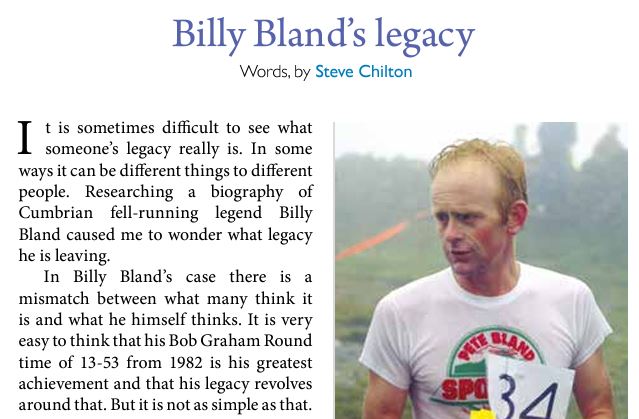
MY FAVOURITE POST
Finally, the blog post that is my favourite from the year is one from 4 September 2023. It is my thoughts on being in Chamonix for UTMB week, something I have longer to do for ages. The blog can be read here: https://itsahill.wordpress.com/2023/09/04/utmb-week-in-chamonix-2023/

NB: Most of my writing can be accessed through the link to my CV.
Bob Graham Round data for 2023
The figures for Bob Graham Round (BGR) registrations, completions, male/female split, direction of travel, etc. for 2023, have been released on the BGR website. It always make interesting reading, and I have commented on it previously. [eg https://itsahill.wordpress.com/2020/01/08/bgr-completions-2019-update/]
I have updated my spreadsheet, and the graphs of several aspects of the data, which are illustrated below with a couple of comments on each.

This first graph shows the data just for completions since 1971. The black line is the actual numbers completing, which was at its highest ever level in 2021, after a downturn in 2020 because of lockdowns. It was slightly down again in 2022, and marginally up in 2023 (2 more than the year before). The red line is the trend line which is obviously up (after the data recovered from the Foot and Mouth blip of 2001) and the dashed blue line is the 6-year moving mean, also trending upwards, quite steeply in last few years.

More recently figures for registrations and completions have been published, allowing analysis of completion percentages. The graph above is of the last 12 years, showing upward trends in registrations and completions (these figures are for males and females combined) despite a drop-off in each for the last 2 years, but interestingly NOT an increasing percentage actually completing (the trend line is slightly down over time). It invariably hovers either side of 50%. The next two graphs look at the male/female data.

The men’s data pretty much follows the pattern of the total data (there are still many more men than women involved). 2023 shows a small increase in men’s registrations and completions for the year, but with both being some way off the highest ever. The completion rate of 49.22% for men is still lower than the peaks % year of 2019 (with a figure of 54.95%), although well above the low if 2014 at 40.8%.
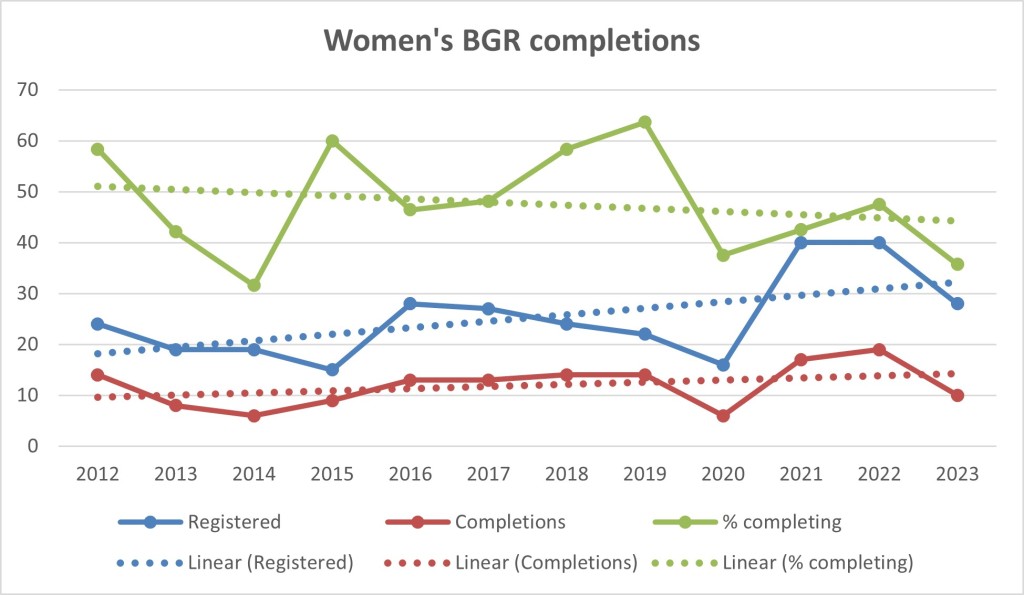
The women’s completions, of 10 (red line) were only the 8th the highest in this 12 year period, from an equal highest ever registrations number in each of the 2 previous years (40). The percentage line (green) is at the top of this graph as the numbers are higher than either the registrations or completions, and had previously shown an upward trend, but this last four year’s completion rates brings that trend line down (admittedly from the usual small sample size).
The original data, and much more (including gems like: average age of successful contenders was 40yr 8mths, and the age of successful contenders ranged from 19 to 63) is available at the Bob Graham Club website.
NB: For a good read about the Bob Graham Round see ‘The Round: in Bob Graham’s footsteps’. It is available from Sam Reads bookshop (online and in shop), direct from Vertebrate Publishers, and from the Big A.
Signed copies are available direct from me (via a blog comment or my Contact page).
List: my best books read in 2023
Three lists of my three best reads in 2023, with short reviews. They are in the loose categories of: sport, nature and novels (and were not necessarily published in 2023).
SPORT
1: Beryl by Jeremy Wilson – Well now. The first book I have given 5 stars to for over 18 months (that is nearly 100 books). I knew she was THE best, but not really what she went through to get there. Wilson covers the training, the barriers, the difficult relationship with her daughter, and weaves together a fascinating picture of this supreme athlete. Let’s hope he has helped give her the recognition she so richly deserves.
2: The Maverick Mountaineer: The Remarkable Life of George Ingle Finch: Climber, Scientist, Inventor by Robert Wainwright – An absorbing and revealing book about an Australian who was lead climber in an early attempt on Everest, and eventually a very influential scientist. His full story had not been told before. The book tells how he could have been the first to climb Everest three decades before Hillary and Tenzing, and how it was that teams lacking his knowledge and presence might have avoided tragedy, but for poor decision making in the British teams that excluded him. A fine read.
3: Chased by pandas by Dan Martin – Dan Martin was not your superstar rider, more a good pro willing to go on the attack. He tried to shake things up, and surprise the peloton, something that he certainly seemed to manage. His book is an interesting and insightful look inside the sport. His descriptions of the interaction between riders, their strategies, and how a team functions (or not) make this a very interesting read, and is definately recommended.
NATURE
1: Wild Fell by Lee Schofield – A book that discusses the impact of mankind on our environment yet gives us hope for our future. Schofield’s account of his team’s work makes for a compelling read. It is naturally mostly about the area in the Lake District where he works (Haweswater), but also covers his visits to other parts of the country and also abroad. A very thought provoking read, that indirectly led me to books on several similar topics.
2: Life of a chalkstream by Simon Cooper – I am no fisherman, but I enjoyed the descriptions of the intricacies of the sport and also life in and around a chalk stream. An entertaining read, well written, with such attention to detail that it helped me form a picture from the wonderful descriptions. Living as I do very near to the fine Hampshire chalk streams mentioned, I shall certainly be out exploring those streams in the near future.
3: The Flow: rivers, water and wildness by Amy-Jane Beer – The role of rivers in our lives, from being in them, to depicting them and to some of the myths about them. Amy-Jane Beer writes very colourfully, without leaving the reader to read just words but more makes it possible to visualise and understand what they describe so well. She is not shy of addressing the challenges that rivers face as well. A thoroughly good read. Much recommended.
NOVELS
1: A whole life by Roberet Seethaler – This is a short novel that covers the life of a man living in a mountain village in Austria, from cradle to grave. It reads like non-fiction, and manages to tell his story without superfluous drama. His life is full of hardship and misfortune, but he seems to manage to maintain a certain peace and dignity. It is a beautifully written and inspirational story, despite having no real plot.
2: Breath by Tim Winton – The narrative follows two friends living in a small Australian town growing up. They discover the joy of surfing through an older man they meet on the way to the beach. The prose gives you a good feel for the claustrophobia of their lives and the freedom they get from surfing. But things take a turn as the story progresses and their lives unravel to a dramatic ending.
3: The Restraint of beasts by Magnus Mills – Another recommended read from a friend that turned up trumps. Mills has written a quirky novel that amused me throughout with his off-beat characters. He writes with style: simply and very engagingly. I’d guess his characters are based on people he has met in his varied working life. I couldn’t beat the the Time Out review, which was ‘You’ll never look at a stretch of high-tensile agricultural fencing in quite the same way ever again.’
…………………………………………………………..
And the best book written (ahem, by me) in 2023 (well published in the year anyway), I feel you asking? That’ll be ‘Voices in the hills: pioneering women fell and marathon runners’. Available here at Amazon, and at all good bookshops. Described in the blurb as: the story of the barriers encountered by the first female runners who fought to participate in the early days of this male-dominated sport.
‘Voices’ on recommended list
Great to see ‘Voices from the hills’ included in this list of 8 recommended books on the UKHillwalking website. As they say, by way of introduction:
If you can’t get to the hills or crags over the festive season then the next best thing is reading about them. From long-awaited new guidebooks, to lavish landscape photography, via biographies of some inspiring figures in hill running and mountaineering, 2023 produced a good crop of titles. Whether you’re present buying for someone else or writing your own list to Santa, check out our pick of the best books published over the last year.
Here’s what Keri Wallace wrote in explanation for the book being included:

One other book on the list will be added to my To Be Read pile when I can get a copy. It is a self-published book by Mike Hartley, entitled ‘From one extreme to another’.
As the blurb says:
Behind every successful athlete is a dreamer. Mike’s dream was to achieve the ultimate physical and mental state. He turned his dream into records and some remained unsurpassed for over thirty years. This book tells his story from schoolboy to international ultrarunner.
The full list of recommended books is available on the UKHillwalking website.
Thank you, Marshal
Volunteering at the Itchen Valley Country parkrun today in beautiful sunshine I was given a marshal point that meant I was ‘off-duty’ quite early, so after phoning in to control to say that the tail walker had come through I decided to try to capture a flavour of the course in some photos (on the camera on my pretty crap phone). There are four images of different parts of the course, which is a beautiful one-lapper that includes paths, trails, horse rides, open grassland and woodlands. Very much a course for trail shoes at this time of year. Surely not unique, but the parkrunners here are some of the friendliest I have come across. Standing on my corner offering words of encouragement I always seem to get a ton of ‘thank you marshal’ comments, once with a bunch of high fives (as my son had just gone by and fived me).

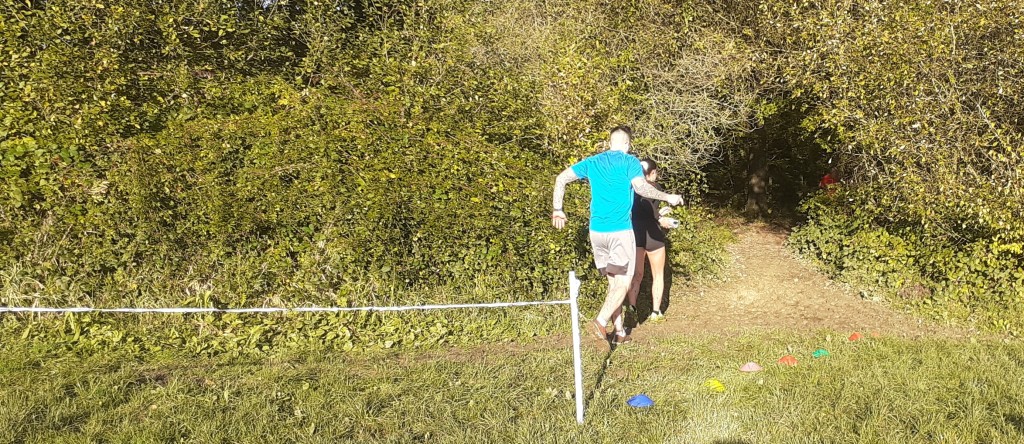

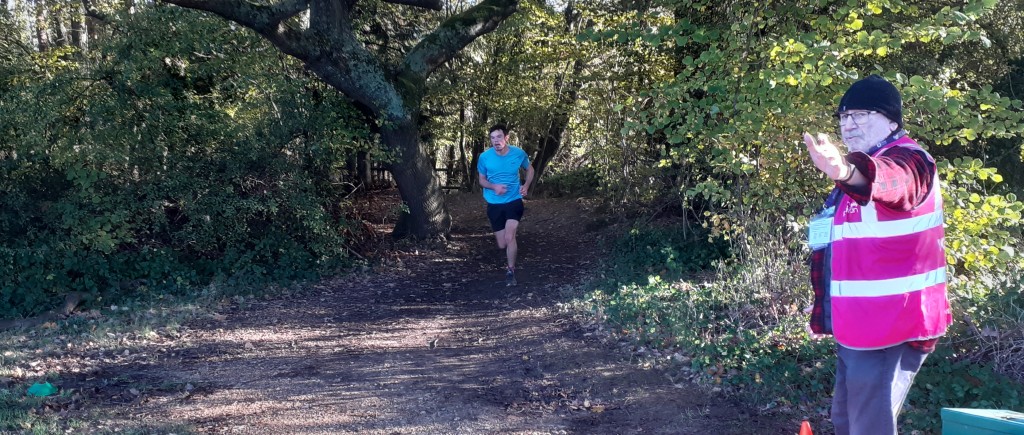
As I have noted previously my background as a competitive athlete (at a fairly low-level mind) and a coach means that I can’t seem to help but check on the faster runners at each event. This week I had a quick chat with the fastest woman finisher. Abigail SKYRME-JONES from Bristol had finished in 22-31 for 7th finisher (on a course that has a fastest time by a woman of 19-30), and let on that she was ‘doing the alphabet’ and that this was the only Letter I parkrun within 2.5 hours of her home base.

The Itchen Valley has a large and very good crew organising the events over the year. This week’s run director was the ebullient Dave L’Enfant, seen here expounding on the beauty of the course to a runner.
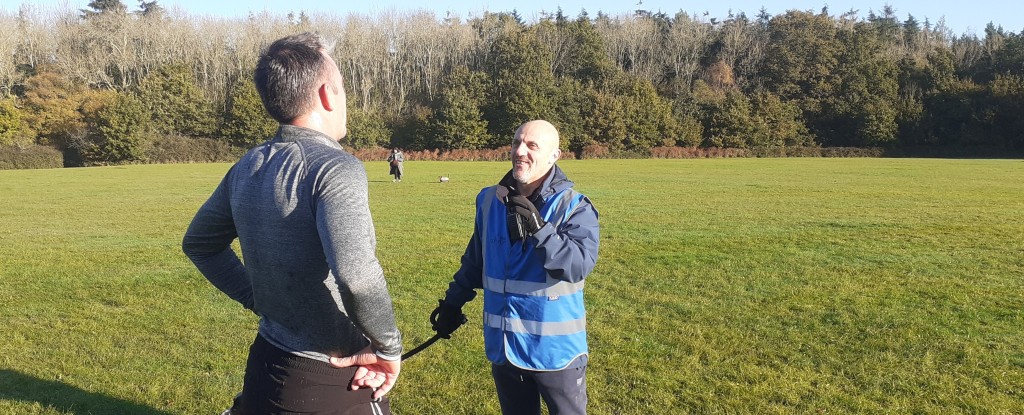
I was also able to see my wife Moira going through halfway and finishing. Picking up her sweet from the tin at the finish we discussed her effort and set off for a coffee and toasted teacake in the park’s Woodland Cafe. This routine of one volunteering and one running has become the norm since moving here.
On a beautiful day like today it is a brilliant start to the day. Thank you, parkrun.





